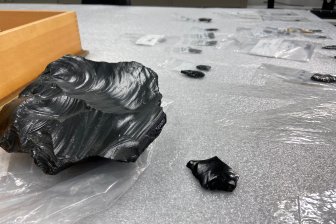Editor’s note: This article has been updated after the federal Indigenous Services Minister clarified the type of audit the Native Women’s Association of Canada is undergoing, as well as after the departure of CEO Lynne Groulx

The Native Women’s Association of Canada (NWAC) is reeling after Ottawa cut $48 million from the advocacy organization, resulting in a staff of 75 being reduced to 30.
“Leaving us to start the fiscal year with $10 million — that’s a very significant decrease,” CEO Lynne Groulx told Global News.
On Friday, April 12, the organization also announced the departure of Groulx after 6.5 years. Groulx, a lawyer and former Canadian Human Rights Commission adviser, is “leaving to pursue a new opportunity,” NWAC said.
A national apprenticeship program and several smaller programs administered by NWAC ended in March and with that ended the federal funding.
Groulx said NWAC has long lobbied for stable core funding to operate, and not just project funding, which comes and goes.
The organization has found itself in the crosshairs of critics over how it has spent money in recent years, renovating its head office in Gatineau to include high-end event rental spaces, opening luxury “resiliency lodges” in Quebec and New Brunswick, and until this funding cut, planned to start a boutique hotel.
“How does that serve grassroots women?” said Crystal Semaganis, who worked at NWAC from 2021 to 2023 but left citing a toxic workplace. “How does that make a difference in our life?”
Groulx said those business ventures will eventually pay for the advocacy work NWAC does, leaving it better positioned to withstand the funding whims of Ottawa.
“We’re doing our best to supplement our revenues and one of the ways is generating our own-source revenue,” said Groulx, “and lessen our dependency on taxpayer dollars and government funding.”
But the ventures are just two years old and not making enough to offset the nearly $50-million cut.
Indigenous Services Minister Patty Hajdu wouldn’t comment on why the tap was turned off or if it will be turned back on. She noted NWAC is undergoing an audit to discover if all aspects of the funding agreement between the organization and the federal government were met.
“I’ll have more to say once that’s complete,” Hajdu said.
Groulx pointed to seven years of audits publicly available on the NWAC website.
“Once that audit is complete, I’m fully convinced NWAC has complied with the rules, and that audit will be on our website as well.”
Aside from the controversial foray into luxury businesses, Semaganis is part of a chorus who believe NWAC lost its way as a powerful advocacy group after the Sisters In Spirit project wrapped in 2010. The campaign began in 2004 and is largely credited with putting the issue of Missing and Murdered Indigenous women on the national agenda.
Bridget Tolley was involved in that project but parted ways with NWAC, often publicly criticizing it for not supporting families of the missing and murdered.
“I’m happy this happened,” Tolley said of the defunding. “Because we deserve a lot more, a lot better treatment because so many have been hurt by everything that’s happened over there.”
She’s referring to nearly a decade of headlines about infighting, leadership coups and allegations of a toxic workplace at NWAC, along with criticism that too many non-Indigenous people were taking up space in the Indigenous organization.
“A lot of dysfunction, a lot of mismanagement, and the administrative follow through of what they were actually trying to do — just was not there,” Semaganis said.
She and Tolley hope this isn’t the end for NWAC, but rather a pause ahead of a restructuring.
“There should be fixing,” Semaganis said. “There should be meaningful Indigenous engagement.”
Addressing her departure from the organization, Groulx said, “Leaving the role you love is always difficult. It has been an honour and incredible journey leading NWAC and contributing to its success. I am immensely proud of what we have accomplished together and am confident in NWAC’s future.
“It was a privilege to have served in this role. That said, I am very excited about the prospects of my new role, leading a new enterprise that focuses on social business and Indigenous prosperity.”







Comments